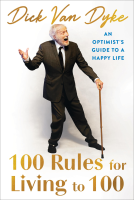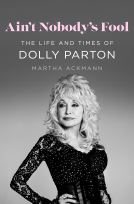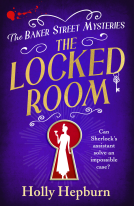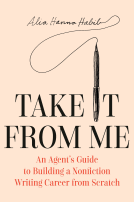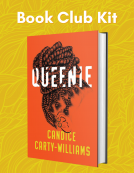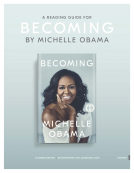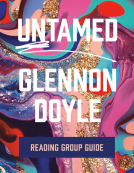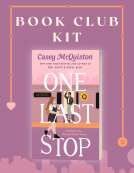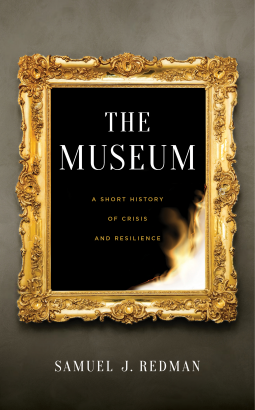
The Museum
A Short History of Crisis and Resilience
by Samuel J. Redman
This title was previously available on NetGalley and is now archived.
Send NetGalley books directly to your Kindle or Kindle app
1
To read on a Kindle or Kindle app, please add kindle@netgalley.com as an approved email address to receive files in your Amazon account. Click here for step-by-step instructions.
2
Also find your Kindle email address within your Amazon account, and enter it here.
Pub Date May 03 2022 | Archive Date Jul 12 2022
Talking about this book? Use #TheMuseum #NetGalley. More hashtag tips!
Description
Celebrates the resilience of American cultural institutions in the face of national crises and challenges
On an afternoon in January 1865, a roaring fire swept through the Smithsonian Institution. Dazed soldiers and worried citizens could only watch as the flames engulfed the museum’s castle. Rare objects and valuable paintings were destroyed. The flames at the Smithsonian were not the first—and certainly would not be the last— disaster to upend a museum in the United States. Beset by challenges ranging from pandemic and war to fire and economic uncertainty, museums have sought ways to emerge from crisis periods stronger than before, occasionally carving important new paths forward in the process.
The Museum explores the concepts of “crisis” as it relates to museums, and how these historic institutions have dealt with challenges ranging from depression and war to pandemic and philosophical uncertainty. Fires, floods, and hurricanes have all upended museum plans and forced people to ask difficult questions about American cultural life. With chapters exploring World War I and the 1918 influenza pandemic, the Great Depression, World War II, the 1970 Art Strike in New York City, and recent controversies in American museums, this book takes a new approach to understanding museum history. By diving deeper into the changes that emerged from these key challenges, Samuel J. Redman argues that cultural institutions can—and should— use their history to prepare for challenges and solidify their identity going forward. A captivating examination of crisis moments in US museum history from the early years of the twentieth century to the present day, The Museum offers inspiration in the resilience and longevity of America’s most prized cultural institutions.
Available Editions
| EDITION | Other Format |
| ISBN | 9781479809332 |
| PRICE | $27.00 (USD) |
| PAGES | 224 |
Average rating from 27 members
Featured Reviews
United States • 1865-present
Growing up, a museum curator was another job I thought I might enjoy pursuing. Looking at interesting artifacts all day and deciding where they belong in the collection - sounded like fun! But, after reading this book, even just the prologue, you come to realize that museums are so much more. Museums are not static buildings that never change but rather collections that are, or should be, constantly changing to keep up with our world's challenges: wars, financial, pandemics, fires, social issues, natural disasters and more. Redman also explores how "museums balance their varied roles in public education, research, and preservation".
Non-fiction, short book (about 200 pages). Only complaint would be that it reads more like a college term-paper than a published book. Deserves to be picked up, especially by archives, library and museum geeks, like myself - highly recommend.
I was gifted this advance copy by NetGalley and was under no obligation to provide a review.
Most people that enjoy museums have no idea of the challenges -- financial, political, social and technological -- that these institutions face. This book enlightens the reader with hardships from the past to the present.
This book addresses several types of crisis from the late 1850s to 2021. Environmental impacts from fires, earthquakes and storms have been destructive over the years. Sicknesses such as the influenza of 1918, tuberculosis and the pandemic which started in 2020 have caused financial setbacks with a lower attendance and shortage of workers. Another area of concern is with the devastation caused by wars and how they have had serious affects on museums. Finally, a huge issue has been with racial discrimination and how protestors in the 70s caused board members to finally begin to listen to their demands. With each catastrophe, leaders at museums needed to make adjustments and solid financial plans for the future to survive.
Throughout the years, board members have been presented with issues they needed to sort out. Discussions include the roles of museums and what stories should be told. Also there is the question of how much the government is willing to invest with these institutions especially when attendance is low and revenues are down. With stiff competition, would museums need to sell a collection to stay afloat when times are tough?
While it was a short book of history, there was a lot to digest. It was interesting with brief stories, facts and quotes. The end includes pages of notes for those requiring details. The author did a great deal of research and presented crucial points on how museums need to reflect on the past to go forward in the future.. The history of challenges that were presented could also be useful for other nonprofits such as libraries. For all of us that love museums, it provides us with a greater understanding of the business side and encourages us to continue to give them our support.
My thanks to Samuel J. Redman, New York University Press, NetGalley for allowing me to read an advanced copy of this book with the expected release date of April 5, 2022.
Ironic, isn't it, that not long after finishing the book and taking a break on a social media site that almost the first post that popped up was one about a virtual tour of Auschwitz being offered by the Holocaust Education Center. In addition, the United States Holocaust Memorial Museum posts regularly on social media, informing and, among other things, sharing photos of those whose lives were lost of changed forever by the Nazis. Far from being hidden away behind closed doors that often require an admission fee to enter, museums are visible and serving a variety of purposes today. Redman's book is a look at how they got to this point. How they have preserved and, yes, improved history.
Whether your small, local museum dedicated perhaps to local concerns or the vast Smithsonian or Louvre, all have had to adapt and learn not just from past events but current ones. It's a cliche but change is inevitable but museums have had to change frequently. Financial problems seem chronic, as do cutbacks in staff and acquisitions. Fire and natural disasters have destroyed and threatened priceless exhibits. Yet, museums persist. Whereas Redman details historical events and their impact on museums, one of the ideas was that the idea of a museums, in whatever format, is that they are durable. Wars and events such as, yes, pandemics, as well as changing attitudes and cultures have also played a role.
Quite frankly, even as a former history major, I also had no idea of the role many museums and their staffs played during the wars. For instance, they contributed not just their knowledge but linguistic skills. They shared how to preserve things, make them last. Yet, they haven't just preserved history and artifacts but shared them with the world at large. The goal of most seems to not just exist but to make a definite contribution to the community and world about them.
Bottom line, Redman does a commendable job presenting not just the history of the museum as an idea but his take on where the museum needs to go in the future. As a former history major and teacher, I was fascinated to discover how involved in the world events about them museums were, whether responding to the Great Depression and world wars to dealing with changing times and needs. That I can so readily encounter museum funded virtual videos on not just the Holocaust but almost any event that has taken place shows how quick man is to preserve. Museums serve a valuable purpose. Yes, the idea of the museum is durable.
Thank you #NetGalley and #NYUPress for the advance copy. I learned a great deal.
THE MUSEUM offers everything that I look for in a history book that I read for fun: engaging, smart, short, and well-researched. THE MUSEUM traces the history of museums confronting crises in the modern U.S.: WWI, Great Depression, WWII, 1970s protests, 1980s-1990s history wars, contemporary issues. book carefully balances (1) museums themselves, (2) the history of museums, (3) how the historical context throughout the history of museums shaped the museums themselves.
.
.
some favorite lines from the conclusion: “museums are not invincible” and “museums are not perfect.” combined with the last chapter’s reference to the “museums are not neutral” movement, readers arrive at: museums are not invincible, museums are not perfect, museums are not neutral.
.
.
I enjoyed the whole book from New Deal funding for museum projects to WWII collaboration with State Dept to blazing culture wars of the past half-century. author consciously mentions that this is a short not cumulative history: it emphasizes famous, sizable, American museums, though broader trends apply to smaller ones, too. sources include institutional records and newspapers.
.
.
THE MUSEUM should be popular among public history graduate students, public historians ‘in the field,’ and museum visitors seeking a history of museums adjusting to change and shaping history.
Samuel J. Redman's THE MUSEUM is an extensive and exhaustive brief history of American museology during the 20th and 21st centuries. As someone who is currently working inside a public museum, it is incredibly fascinating to see how much and how little things have changed in 100 years: the way two World Wars, devastating fires, economic crashes, and two pandemics shaped the way museums work nowadays is incredibly compelling, and Redman's writing (while a bit pedantic at times) is rather easy to read. A book that is well worth reading if you have ever wanted to know more about just how complicated running a museum can be, and how important it is to adapt to the changing of times.
A much needed and timely book, Redman effortless focuses on a succinct but comprehensive timeline of crises that museums have faced in their history. Working beyond obvious natural disasters, I appreciated comments on social, economic, and even health crises that have tested and shaped institutions - and continue to shape them today.
This book is not only a must read for museum professionals, particularly those future leaders who are still early in their career, but also serves as critical reading for any Museum Studies program.
I look forward to reading more of Redman’s work.
 Reviewer 153322
Reviewer 153322
Redman, whose previous excellent books analyzed museum bone rooms, and the approach of "salvage culture" to anthropological study and collections, offers a brief but thought provoking set of case studies of American museums in crisis situations, and how their choices have changed the trajectory of the institutions. From the 1918 flu, the Great Depression, WWII, the museum protest strikes of the 1970s, the Enola Gay culture wars, 9/11, the 2008 financial crisis to the current Covid closures, major public fixtures face laying off staff, deaccessioning valuable pieces and even permanent closure. Some have taken dramatic pivots--using WPA monies and workforce to reorganize and catalog collections for more accessibility, promoting the value of their items as models for technical innovation (as the navy called on Inuit arctic boats and cold-weather gear for inspiration) and their experts for cultural knowledge used by the government, responding to protests about that help used during the Cold War as soft power by the CIA, collecting contemporary art and reframing existing exhibits to reflect changing social norms and building or evolving relationships with ancestor or creator communities, sending back human remains under the NAGPRA, planning for terrorist attacks and severe storms from climate change (as in hurricanes Sandy and Katrina), making their galleries and their jobs more accessible to marginalized communities, and scrambling to keep the lights on during Covid (my favorite, of course, is the penguin field trip). Redman is ideally placed to offer sensitive commentary on the ways in which powerful institutions can and need to bend to survive, and their obligation to be a meaningful part of the social world where they sit.
Short history of incidents that museums had to overcome to protect art. I found this book to be incredibly interesting. My only feedback was is that it’s completely devoid of all pictures. I don’t think any books on our evening history book should not have any pictures of the art.
Readers who liked this book also liked:
Kristin Haynes
Children's Fiction, Parenting, Families, Relationships
Alia Hanna Habib
Business, Leadership, Finance, Nonfiction (Adult), Professional & Technical
Elle Cosimano
General Fiction (Adult), Mystery & Thrillers
We Are Bookish
Literary Fiction, Multicultural Interest, Women's Fiction
